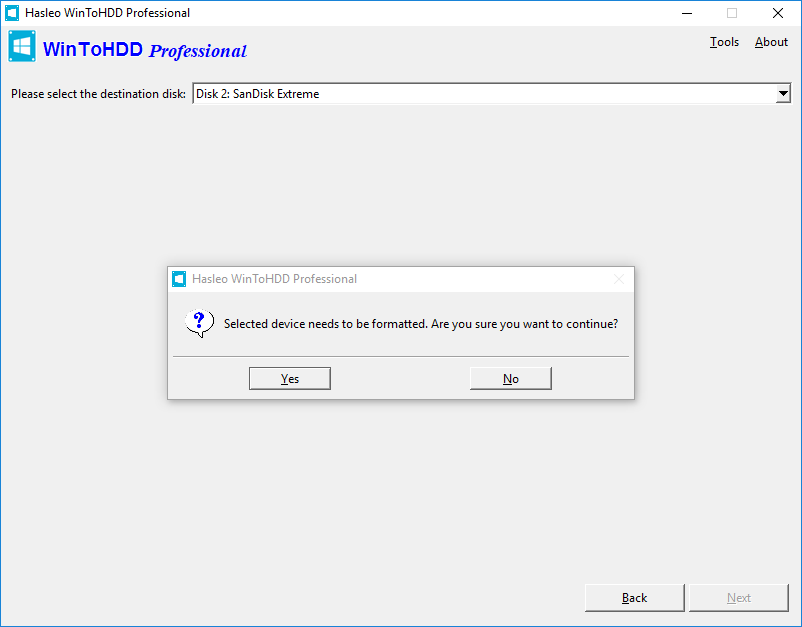

- Format disk windows 10 install install#
- Format disk windows 10 install upgrade#
- Format disk windows 10 install Pc#
- Format disk windows 10 install iso#
Windows will automatically activate once it’s installed. If you’ve ever installed and activated Windows 10 on this computer before, click “I don’t have a product key”.If you don’t have one, but you have a valid 7, 8, or 8.1 key, enter it here instead. If you’ve never installed and activated Windows 10 on this computer before, you’ll see the activation screen.What you do here depends on your situation: This may require you change a setting in the BIOS, access a boot menu, or use the “Use a device” option in the advanced startup options on a modern Windows 8 or 10 device that includes UEFI firmware instead of the traditional BIOS. Select “Install Now” once the Windows installer starts. Restart your computer with the USB drive or DVD inserted, and boot from that device.
Format disk windows 10 install install#
Install Windows 10 from the installation media like you would any other operating system. Most people will want the 64-bit version, but you can create installation media that includes both, and the installer will automatically select the most appropriate one when you use it to install Windows on a computer. (If “Windows 10” is the only option, you can safely use that and it will detect what version you want.) You should also choose your language and select whether you want the 32-bit or 64-bit version of Windows here.
Format disk windows 10 install Pc#
Now, things are much easier, since you can activate Windows 10 with a Windows 7, 8, or 8.1 key.īe sure to select the correct type of installation media for the copy of Windows 10 that’s licensed for your PC - Windows 10 Home or Professional.
Format disk windows 10 install upgrade#
Previously, Microsoft forced users to upgrade to Windows 10 before they could start fresh and do a clean install–which was annoyingly complicated and time-consuming. RELATED: Windows 10 is Out Today: Should You Upgrade? However, you can always install VLC to get DVD playback or use one of the more fully featured Windows Media Center alternatives. Or, you may need to perform a clean install on a computer without an existing Windows system after installing a new hard drive. Of course, you’ll miss out on the good pre-installed apps, like the free DVD player program that comes with many PCs. This is particularly useful if you’ve purchased a new Windows 10 PC and it includes manufacturer-installed bloatware you don’t want. Microsoft allows you to get an entirely fresh system by performing a clean install.

Split the Windows image file into smaller files, and put the smaller files onto the USB drive: Dism /Split-Image /ImageFile:D:\sources\install.wim /SWMFile:E:\sources\install.The Windows 10 upgrade process drags old files, settings, and programs from your previous Windows system to your new one.
Format disk windows 10 install iso#
If your image is larger than the filesize limit:Ĭopy everything except the Windows image file (sources\install.wim) to the USB drive (either drag and drop, or use this command, where D: is the mounted ISO and E: is the USB flash drive.) robocopy D: E: /s /max:3800000000 Windows USB install drives are formatted as FAT32, which has a 4GB filesize limit. Follow the instructions to install Windows. Select the option that boots the PC from the USB flash drive. Turn on the PC and press the key that opens the boot-device selection menu for the computer, such as the Esc/F10/F12 keys. For more information, see Automate Windows Setup. Optional: add an unattend file to automate the installation process. Use File Explorer to copy and paste the entire contents of the Windows product DVD or ISO to the USB flash drive. Step 2 - Copy Windows Setup to the USB flash drive If Mark Partition as Active isn't available, you can instead use diskpart to select the partition and mark it active.


 0 kommentar(er)
0 kommentar(er)
